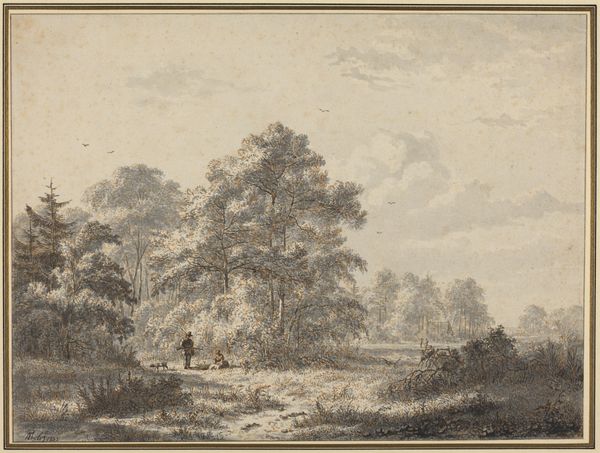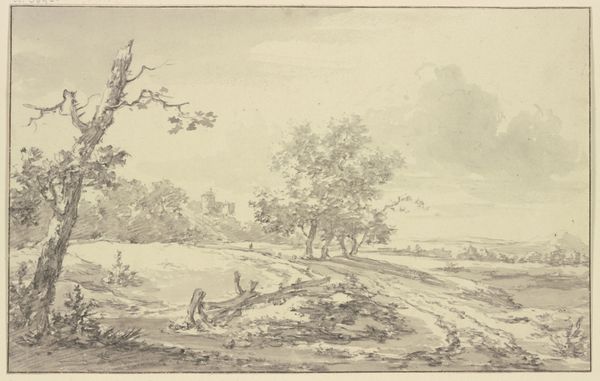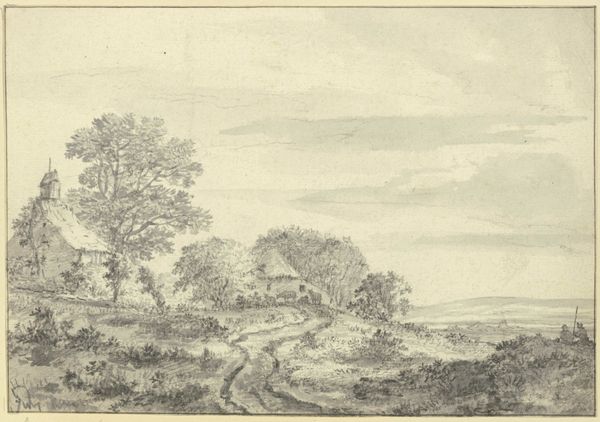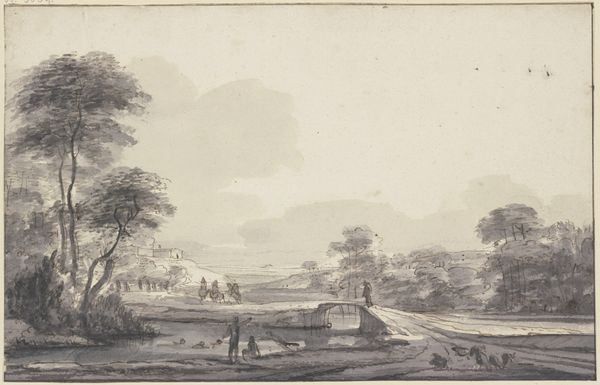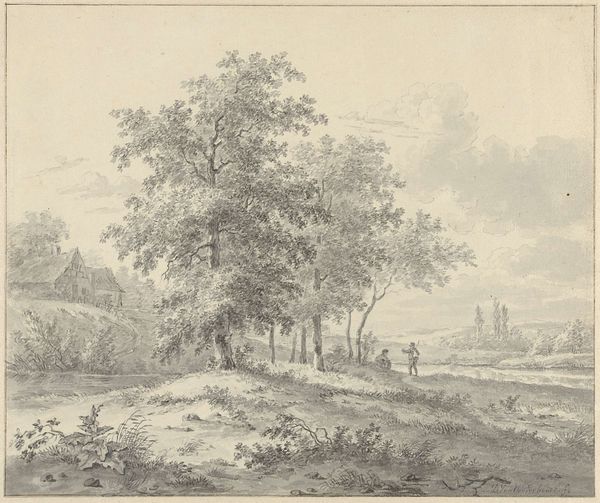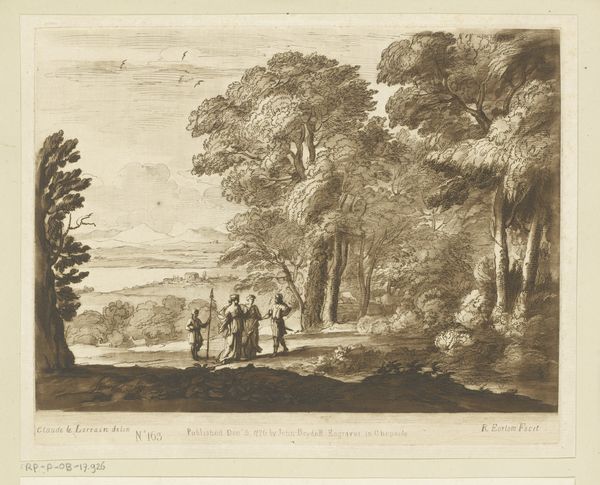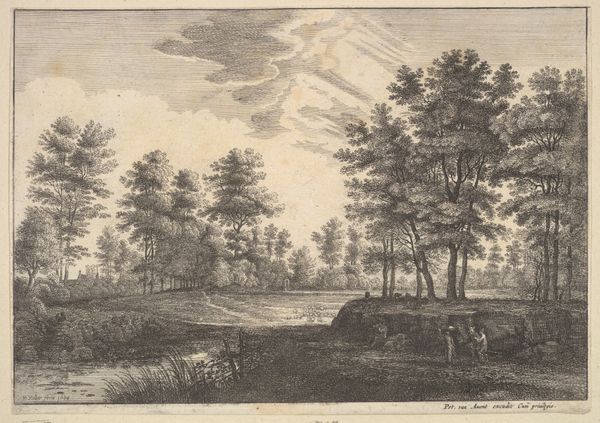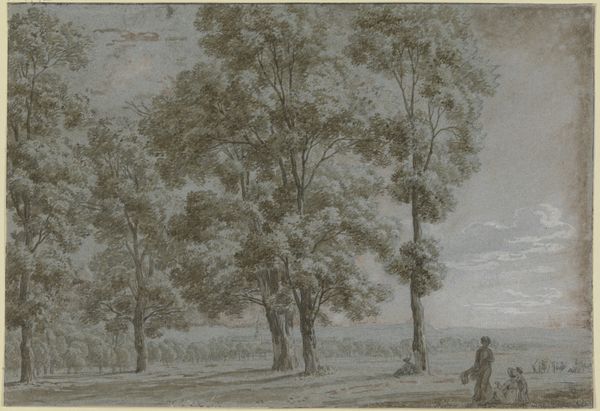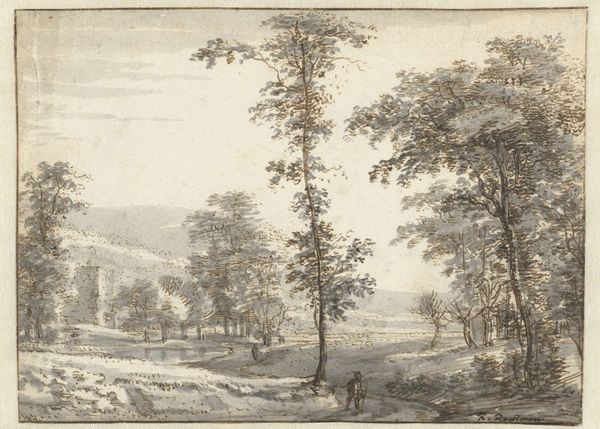
drawing, ink
#
drawing
#
baroque
#
landscape
#
ink
#
14_17th-century
Copyright: Public Domain
Curator: Welcome. We’re standing before “Waldwiese, links einige Hirten,” an ink drawing housed here at the Städel Museum. The piece is by Roelant Roghman and depicts, as the title suggests, a forest meadow with shepherds on the left side. Editor: My initial impression is of a gentle melancholy. The monochrome palette contributes, certainly, but there’s also something in the artist’s delicate lines, which feel almost tentative, vulnerable. Curator: The drawing emerged from a particularly tumultuous period. The Dutch Republic, though flourishing commercially, was facing intense political factionalism. Landscape art provided a kind of idealized vision of the land amidst these challenges. Roghman was known for landscapes but especially those that evoked the cultural pride and patriotism, especially after the Eighty Year's War. Editor: Observe the meticulous rendering of the foliage, then contrast it with the somewhat more schematic treatment of the human figures. The values employed across the artwork contribute to spatial depth, drawing one's eye toward the horizon. See the skillful play between solid form and open space with so few shades of ink. Curator: Absolutely, this deliberate contrast reflects the hierarchical structure within Dutch society and also suggests humans lived within and also dominated nature. These representations of farmers are important for Roghman, and are presented frequently within this artists' pieces. The use of ink as well lends a more ephemeral effect which he employed with the various themes presented in this collection. Editor: Perhaps, but the dominance of the land makes humanity's attempts to manipulate seem as small and fleeting. Note the birds drawn in silhouette, perfectly poised amidst the expanse. Their forms and grouping almost mirror the forms and grouping of the sheep, linking nature to humans in many ways. Curator: A compelling formal reading! Looking at this historically, however, we also see how artists like Roghman are responding to specific patronage demands, constructing and reconstructing this Dutch image in order to preserve this space for future commissions. Editor: Ultimately, whether viewed through a historical or a purely aesthetic lens, “Waldwiese, links einige Hirten” is a masterful study in contrasts, of solid and void, of human presence and natural grandeur. Curator: Yes, its engagement with Dutch cultural identity makes it very appealing.
Comments
No comments
Be the first to comment and join the conversation on the ultimate creative platform.
